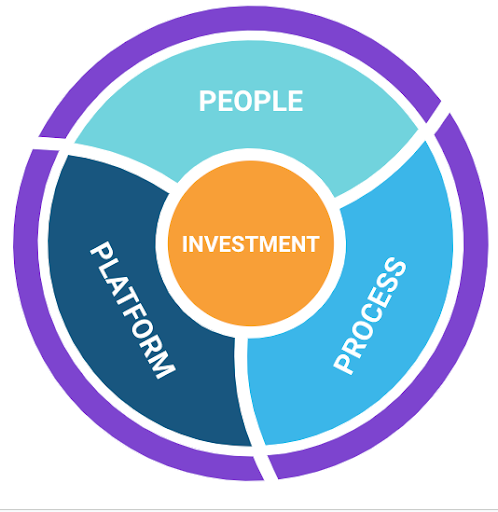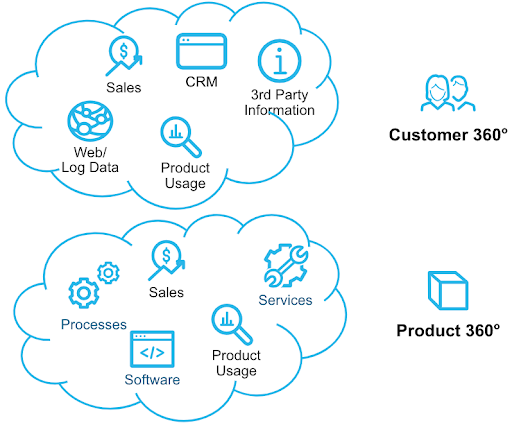Data Strategies Map a Journey From Origin To Destination

There is a scene in Mission: Impossible – Rogue Nation where Tom Cruise is hanging onto the outside of a jet as it has taken off. And while, yes, he’s going with it, he’s not really on board or in control. Some data executives feel like that. It’s not enough to establish goals — or, the destination in this metaphor. The data strategy must provide a flight plan for making sure you get there — on time, on budget and, of course, safely on board.

Indeed, your data strategy starts with your ambitions — your business goals. However, the journey is not only about the destination. After defining the goals, where you want to go, you need to evaluate where you currently are as an organization. That requires a strong dose of reality. That starting point will help identify the itinerary, and what you’ve got to work with along the way. Then you’ll have a map of how to get to the destination you want.
Assess your current reality
In recent strategy workshops with customers, we’ve focused on assessing four areas: data access, analytics and AI capabilities, organizational structure, and culture and communication.
As we all know there is no AI strategy without a data strategy, so we start with the data. To better understand a customer’s current data reality we ask a series of questions:
- Do you have access to all of your internal data?
- Have you unlocked data from existing applications, systems or business unit silos?
- Have you transformed your unstructured data into structured, usable data?
- Are you currently sharing data with partners and/or customers?
- Are you currently sourcing external data from data providers or via a marketplace?
- Are you sure your data is protected and its use is compliant with regulations?
With the explosion of interest and adoption of AI, the ability to access and govern wide and diverse sources of data is even more imperative. Data diversity mitigates the risk of hallucination and bias.
However, how the data foundation has been built and maintained depends on more than the data or the technology itself. Another series of questions digs into the people, process and organizational elements of the current reality:
- Do you have the right data, analytics and technical skills?
- Where do data and analytics capabilities reside within your organization?
- Are your teams organized and empowered for successful collaboration?
- Have you identified and prioritized use cases, or analytics and AI initiatives?
- Are you able to deliver data insights and applications to business users?
- How do you currently measure the impact of your data and analytics projects?
- Are you evangelizing data, educating the organization and building a data culture?
- Do you measure and communicate the impact of data on the business?
These questions are certainly not exhaustive, and the answers to each of them can be complex. For example, assessing existing talent begs the question of where to reskill or hire. Equally complex is how data is organized. That can range from centralized to decentralized, with the high likelihood of a hybrid model somewhere in between. A happy medium is often found when data remains distributed across the organization but is coordinated through strong data governance and processes to identify and prioritize its use.

In a recent workshop with a large port authority, the distributed yet coordinated model was the end goal it settled on. It had already begun a data transformation with a centralized data team and strong executive support. The broader organization, however, consisted of multiple business units across the globe and many subsidiaries and partners with whom data needed to be shared. New AI requirements added more complexity. The team questioned how to make that happen efficiently and at scale.
Several key challenges the data team continued to grapple with included:
- How do we know what data we have across the broader organization?
- Can we describe our data in consistent and meaningful ways?
- How can we acquire the external data we need?
- Can we collaborate across a broader data ecosystem?
- How can the data be more easily discovered and accessed by the business?
- How can we deliver the required information and insights to the right people?
- How can we manage costs with better visibility and control?
These questions reflect the needs of a broad ecosystem with the goal of becoming more data-driven. The underlying theme across these questions is coordination.
Create opportunities with the right foundation
"Victory comes from finding opportunities in problems," observed Sun Tzu, the ancient Chinese warrior and strategist. And, that is as true for tech as it was for war. Yes, data is considered an asset. Many might consider it a challenge (and it can be). But the opportunity is to put it to use and deliver value. That’s where you want to be sure to align these opportunities to your business goals by building the right foundation.
The ultimate goal of the data strategy itself is to create opportunities to use data, and deliver value — effectively and at scale.
Three pillars form the foundation: the platform, the processes that govern the use of the platform and the people who use it. That foundation enables the delivery of actionable insights across all organizational activities, or use cases, in an effective and scalable way.

Platform
The foundation requires bringing data together — not necessarily physically but in an integrated platform that facilitates well-governed access for end-to-end execution of analytics and AI projects. The platform extends from ingestion through governance and operations to insights delivery and impact. Find out more on Snowflake.com.
Here we’ll just highlight a few key features. First, all types of data must be supported: structured, semi-structured and unstructured, as well as data that resides across clouds or even on premises. Moreover, it’s not just about internal data. The data foundation must enable collaboration with external partners and customers to facilitate joint use cases and ensure the ability to access third-party sources for a more complete picture of your business.
Another key element to a solid data strategy is the notion of data products. A data product can be the data from a single source application or process, or an aggregate of multiple data sources to deliver a composite view, such as a Customer 360 or Product 360. The component products will be combined to form different data products, and to address the needs of different users. This requires coordination, and a mechanism for discovery and access — like Snowflake’s listings and Marketplace. Of course, the actual form a data product takes can range from the data itself to a simple interface or decision-support tool to a native application incorporating business logic. The choice depends on the use case and the end user. The platform should support all use cases and end users.

Obviously there is much more, and what’s included in the platform is a big part of the data strategy… but it is not the only part.

People
A complete data strategy will address the roles and responsibilities of all employees. A data-driven organization means that everyone has a role to play.
Most data strategies include a RACI table to identify those responsible, accountable, consulted or informed across tasks. But the data strategy must also consider the roles of everyone across the whole organization — not only those who are already data savvy. Becoming data-driven requires a cultural transformation that extends “from shop floor to top floor.” After all, everyone plays a part in either capturing, protecting or using data. In fact, those who capture the data are often overlooked — like the cashier or the field service technician. And, that type of change requires more than a megaphone. Your data strategy must include a communications strategy to evangelize and educate all employees.
Process
A CDO once told me that the D in CDO didn’t stand for “data” but rather “diplomacy.” One of the keys to success in the role — and of the execution of a data strategy — is to coordinate across key stakeholders and potentially competing requirements, often with limited resources. Doing that effectively requires transparent policies and processes.
- Who has access to what data, or for what purposes?
- How will platform requirements be determined?
- How will data products be defined, developed and deployed?
- How will data product requirements and use be coordinated across multiple consumers?
- How will data products and projects be prioritized?
- How will resources be allocated?
- How will the outcomes be measured?
- And, ultimately, how will ongoing investments be decided?
Putting these guidelines and guardrails in place ensures the smooth execution of the data strategy. Policy and processes establish transparency. People know where they stand and how to move forward, and ultimately trust the process.
Process and policy are often considered the domain of data governance. But it is important to think of governance broadly, and not only with respect to data security, privacy and compliance. It’s about operations and ultimately business transformation.
From an operational perspective, transparent processes help to coordinate requirements and resources, like Data or AI Ops, by defining steps — from discovery of requirements and coordination of investments to the monitoring and measurement of impact. For example, a data strategy must include a process for prioritizing use cases, based on strategic goals of the business and the feasibility of the effort. That process will suggest next steps and actual strategy execution.
In an upcoming Snowflake ebook, many AI-focused data leaders of Snowflake customers will share how they have executed effective and scalable AI strategies, including both lessons learned and best practices. Stay tuned.
Map a way forward
Putting it all together, your data strategy must start with your destination goals and map your journey from the current reality. But we can’t just beam ourselves from one place to another. We’ve got to build the platform to get there; put in place the processes and policies for how to effectively use that platform; and teach everyone how to use it. That includes assessing how teams are organized, everyone’s roles and responsibilities, and making a plan to continously communicate across the whole organization.
We all know it, but it doesn’t hurt to say it again. For those who aspire to be data-driven, a data strategy is not just about the technology but also about the people and processes (until we become truly self-driving). Without roads and rules, drivers are going to cause collisions and gridlock. A data strategy must map it all.
